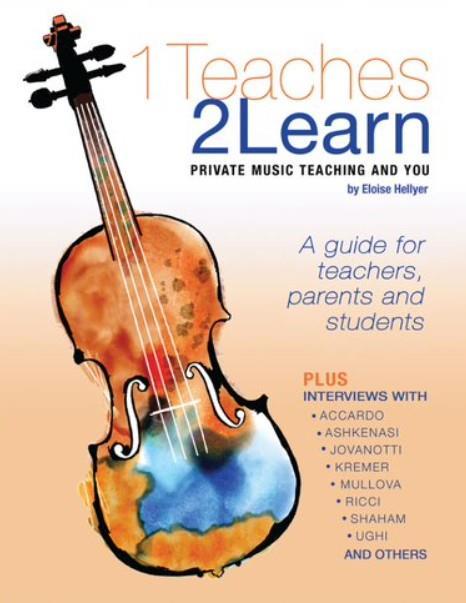Celia Cobb reviews a book (and e-book) filled with interviews and advice from a lifetime of string teaching

1 Teaches 2 Learn: Private music teaching and you
Eloise Hellyer
EBOOK: ISBN 9791220072052 $49.99
BOOK: ISBN 9781956428001 $59.99
458PP SHAR MUSIC
Eloise Hellyer’s 1 Teaches 2 Learn is a book of two halves. The first section is an extended discourse around the enormous and often thorny subject of what instrumental teaching is really about, how to approach it and how to be good at it. The author doesn’t shy away from potentially uncomfortable home truths; in the opening chapter we read that ‘most musicians go to conservatory… because they want to be musicians. Suddenly… many find themselves teaching instead – whether they want to or not.’ She also highlights the often unspoken fact that, of the qualities a teacher should ideally have, competence on the instrument is not necessarily at the top of the list, as well as giving her own strategies for working through those days when enthusiasm for teaching is hard to find. She tackles concepts such as emotional involvement, charisma and humility, as well as more prosaic subjects such as building a studio, dealing with parents and working with students who don’t practise. Throughout these discussions, the author mixes (often hard-hitting) questions with thoughts, opinions and anecdotes from her long teaching career, as well as offering practical suggestions and advice to both new and established teachers. The rest of the book is a collection of interviews with violinists and violin teachers, starting with Viktoria Mullova, continuing with Gil Shaham and taking in Shmuel Ashkenasi, Manny Hurwitz and many more along the way. If you like a good quote, there’s plenty of material to mine here, and countless stories that give fascinating insights into teacher–pupil–parent relationships and the process of practising and learning.
The text of the first part of the book is written in a relaxed style, with a sprinkling of some rather splendid vocabulary – neophyte, picayune, genuflect, behoves, vainglory – to give just a few examples. The easy-on-the-eye format of the book and the conversational style of the writing make it tempting to read large chunks of the book in one go, which I found had a similar effect to having an interesting (and occasionally slightly gossipy) chat with a fellow string teacher over coffee. The author makes a point of focusing on teaching as a spiritual activity and I have to confess that some of the deeper philosophical ideas didn’t particularly chime with me: ‘[teaching] is being in a state that is so receptive that a circle of energy forms between you and your student so that you become him and he becomes you’. But the committed way in which the ideas are presented is nothing if not thought-provoking and the entire book is full of interesting, useful and discussion-sparking topics.
Although the book appears to be aimed at violin teachers – the violin is referenced throughout, interviews at the back are with violinists and there is a large picture of a violin on the front cover – there is a high proportion of general, rather than violin-specific, content in the main body of the book. In that sense it would undoubtedly be of interest and benefit to teachers of any instrument.
CELIA COBB











































No comments yet